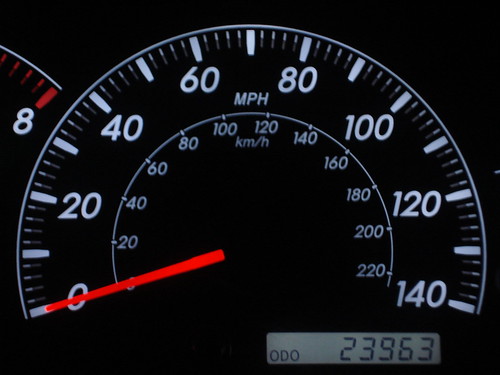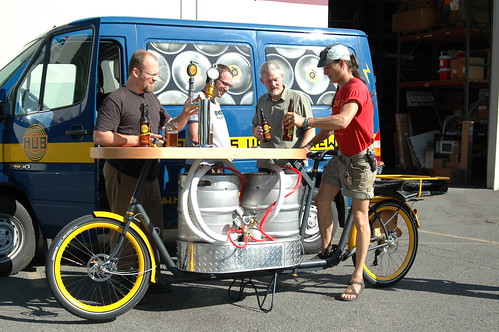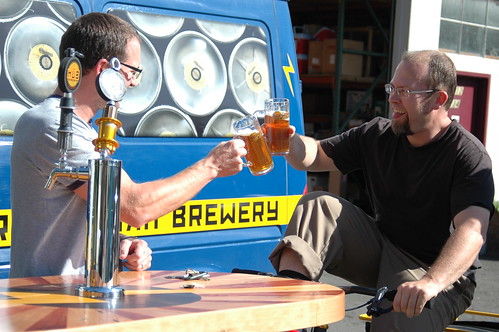American innovation @ its best; Two Kegs on Two Wheels Brings The Party To You
(Source: Wired; Bikeportland)
The Hopworksfiets party bike was built in, where else, bike- and beer-mad Portland, Oregon, by the bike builders Metrofiets. All you really need to know in order to fall in love with this bike is that it carries not one, but two beer kegs along with a pair of taps to serve the suds.
The mobile bar, a custom build for Portland-based Hopworks Urban Brewery, is a long-wheelbase cargo bike with the load bed up front, which we guess means that pedestrians can’t sneak a quick pint when you’re stopped at the lights. There’s a “sound pannier” at the back, containing an amp and a speaker, and the rear rack is just the right size to carry a stack of pizza boxes.
This party is entirely human-powered, with the help of nine gears — any more would allow a rider to go faster than would be entirely wise, explained Ross. Sturdy looking disc brakes and chunky tires with full fenders adorn both wheels.
When fully loaded with pizza, beer, and ice, the bike should just about meet Metrofiets’ 400lb weight limit. Still, Ross is recommending that the bike be transported with pony kegs, and refilled with full-sized kegs on the scene.
The bike is a group effort. Ross and Nichols designed and built the bike. Damon Eckhoff inspired the sound system and did much of the wiring. Metropolis Cycles (2249 N Williams) built the wheels and provided general bike shop support. Michael Moscarelli of local brewing supply company F.H. Steinbarts did the beer plumbing; local high school biology teacher, homebrewer, and woodworker Gregg Heppner created the bar top and sound system shell. The bike’s components (including the tap handles) were donated by Chris King Components and Shimano.
Click here to read more and here to see the slideshow of the bike in action.
Oregon’s mileage-based taxation experiment declared a roaring success; Final Report now available
(Source: Streetsblog & WorldChanging)

The Oregon Department of Transportation (ODOT) has compiled a 100-page report on the experiment that covers a lot of ground, but basically describes the trial as a roaring success. A few interesting features of this report :
- Overhead is low. Because the mileage tax piggybacks on the existing gas tax collection system, it’s easy and cheap for the state to administer.
- Payment is simple. From the driver’s perspective, the mileage tax differs little from the gas tax, other than the fact that their gas station receipts contain interesting information on miles driven.
- Privacy is protected. The state only gets odometer information, not information about vehicle location.
- Evasion is difficult. Even if you tamper with the GPS receiver, you’re still going to pay the gas tax.
- Phased implementation is possible. Oregon doesn’t foresee a complete changeover to mileage taxes happening until 2040. This is a bit too slow for my taste (I really hope gas stations don’t exist in 2040), but the point is that gas taxes and mileage taxes can happily coexist as the vehicle fleet turns over.
Technically, the system worked. Just as importantly, public acceptance was high. 91% of [self-selected] test participants preferred the system to paying gas taxes.… Before the experiment began, media portrayals of the system were almost uniformly negative — and inaccurate. By the middle of 2006, media coverage ranged from neutral to positive, and were far more accurate. Citizen comment reflected this broader trend. ODOT concludes, “Effective communication can lead to public acceptance.”
Click here to read blogger Adam Stein’s take on this subject at WorldChanging.com. For those interested here is the final report in PDF form.



